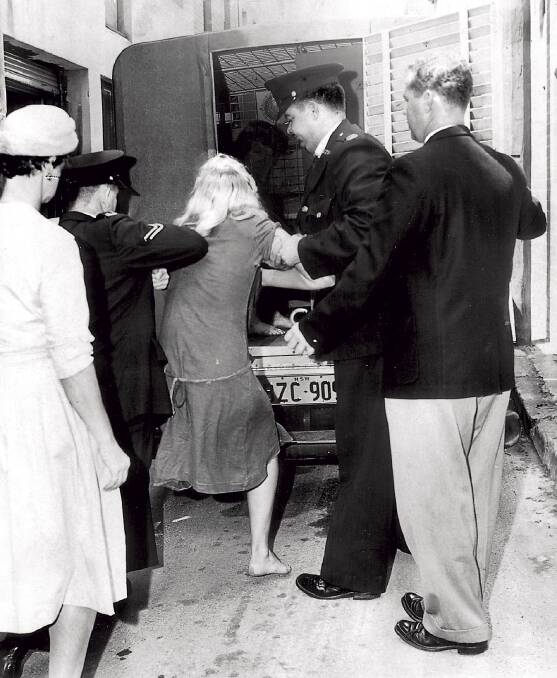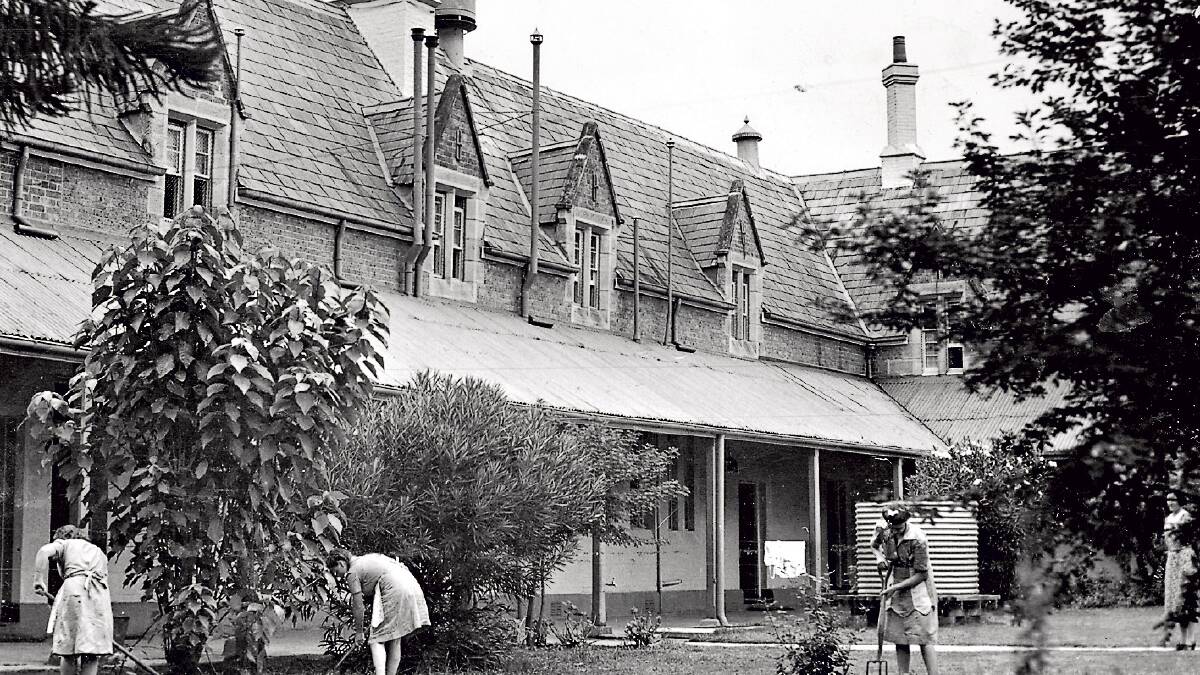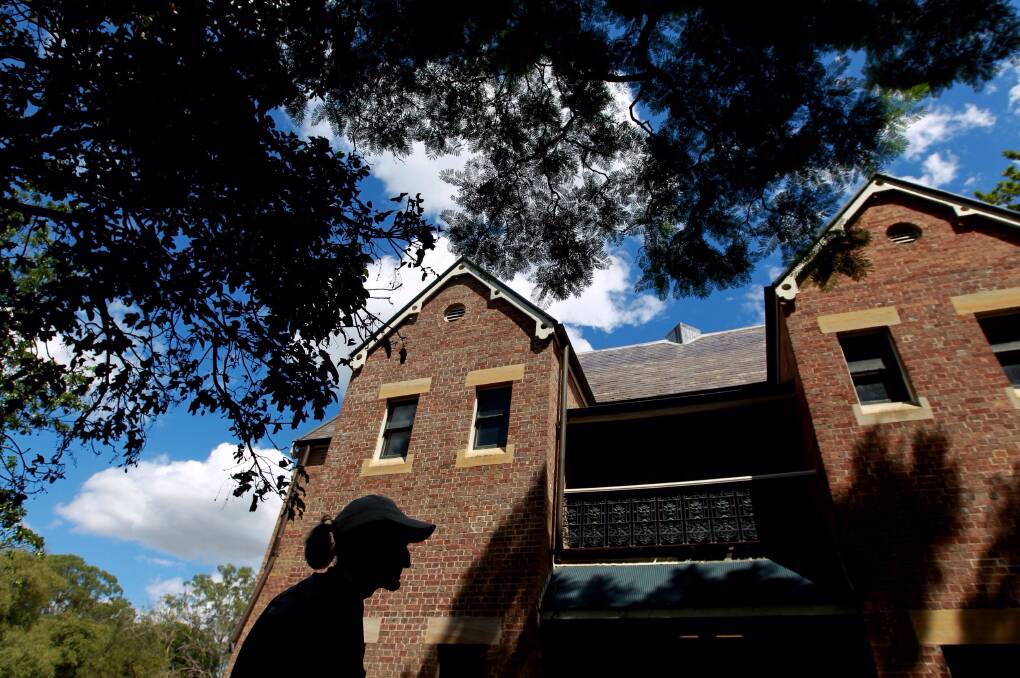
They were brutally bashed, had their teeth ripped out with pliers and lived in fear the next girl who disappeared from their dormitory during the night would be themselves. Now, as NSW Police appeal for witnesses, more and more women are breaking their silence on the sexual and physical abuse they endured as wards of the state in the notorious Parramatta Girls Home during the late 1960s and early ‘70s. Three Riverina women tell their stories.
Subscribe now for unlimited access.
$0/
(min cost $0)
or signup to continue reading
IT’S EDGING closer to 4 o’clock when the afternoon coo of pigeons will reduce the hard-faced 60-year-old to tears she’s only ever shed privately.
She recalls, for the first time in nearly half a century, the torture of scrubbing with a toothbrush the same square of concrete for days on end to remove pigeon droppings that would serve as the only reminder of the outside world.
“We had to scrub just in one spot all day from 6am until 10 o’clock at night,” the woman said.
"I never knew what the outside of the building looked like because when we arrive, they ring a bell on the side gate … It was just like a prison cell.”
The retired Wagga nurse, who cannot be named for legal reasons, spent six months in Parramatta Girls Home after she was taken from her hometown of Young at 13 to live with her brother in Redfern.
Determined to return to school in Young, she ran away and hid in caves tucked away in Canterbury until she returned home days later for her family to take her to the authorities.
At 14, she was stripped of her identity as she entered the home that still haunts her.
The gold bracelet she once wore around her wrist everyday was cut off, her hair was chopped short and she was issued with a uniform that she would later wash religiously when laundry duties included hand washing, drying and pressing for days on end.
The woman - like many of the hundreds sent to the state-controlled child welfare institution - was physically abused and threatened.
“If you heard one of the girls getting bashed, if you dared say anything to anyone or ask where that person was, you’d be locked in isolation,” she said.
“You could hear (them) being thrown down the stairs and screaming.
“We all had to pretend we were asleep.
“You knew something was wrong when a girl went to bed with you at night and in the morning, they were gone.”
There was no doctor or nurse at the school and girls on their period were only handed a new pad if they showed the old used one.
“If you dared say you had a toothache, they’d pull it out with pliers,” she said.
“If you needed glasses, too bad.”
The now 59-year-old has lodged a formal complaint with NSW Police, with the home, which officially closed in 1974, currently at the centre of a multi-million dollar settlement to compensate abused inmates, who also claim to have been used for slave labour.
“It’s not just because it’s re-surfaced (that I’m breaking my silence),” she said.
“I remember every afternoon at 4 o’clock when the pigeons come out.
"I see it as a relief in a way, you’re not hiding a secret anymore.”

IT’S a reality Lockhart’s Annette Jenkins knows too well.
"I honestly was petrified," she says.
"It was putrid. It was death, horrible."
After spending nine months at the home from the age of 15, the 60-year-old still struggles to touch or hug anyone.
"Every girl that's been in there ... you're never going to be normal,” she said.
"They ruined our lives really.”
Annette was taken from Lockhart with her four brothers at the age of five to live in an orphanage in the Sydney suburb of Glebe.
It was the death of her adopted mother years later that upturned a happy family life in Narrabeen and prompted her spiral into rebellion.
Annette was caught in her boyfriend’s stolen car and charged with expose to moral danger, sending her to the notorious Parramatta Girls Home after a short stint in Mindah Remand Centre.
There, she was one of many who knew no different than to be hit across the head relentlessly, have their hair yanked repeatedly and be thrown in the dungeon.
“They treated us like animals,” she said.
"You were always wondering when you were going to get belted again.
"You knew if someone went down there (the dungeon) what would happen to them.”
The girls came to dread wash hour when they’d walk gingerly across purple crystals to prevent tinea, bow their heads and have rationed shampoo poured across their clipped hair.
When Annette - known only as number 44 - was released, she was put into a house where it was arranged she would marry a Russian man.
In defiance, she ran away at 17 and spent her last year as a ward of the state on the run. She’d sleep in chook pens, hitch-hike to her next town and graze only on what friends would smuggle her.
Now, she’s happily married, has five adult children, nine grandchildren and is team leader of domestic staff at Lockhart Hospital, where she’s worked for 14 years.
But those nine months have left a lasting impression on her.
"That place, it was wicked,” she said.
“I survived it, but you never forget that."

“IT’S an address you’ll never forget,” Shirley Salau says.
“You try to block it all out, but it’s just so hard.”
The 59-year-old Hay woman was charged in Deniliquin Local Court with expose to moral danger and sent to Parramatta as a ward of the state at 15 for running away from home.
She had no idea what to expect when guards stripped her of all possession upon arrival, including a lock of her baby brother’s hair.
“I kept my head down, tried to do what I was supposed to do,” she said.
“They come walking through the dorm and you used to pretend to sleep.”
The home was first occupied in 1887 and was previously known as the Roman Catholic Orphan School and the Industrial School for Girls.
Among the home’s officials, Frank Valentine, now 75, was alleged to have physically or sexually abused girls as the school’s former relieving deputy superintendent.
Valentine faced numerous sexual assault charges when he was the Youth and Community Services Wagga regional manager, but was acquitted in 1987 by a District Court Jury.
“(I was) just fearful thinking you were going to be next,” Shirley said of the abuse.
When she was released, 17-year-old Shirley went governessing in Booligal and worked on properties across Gundagai, Lismore and Deniliquin so she wouldn’t have to deal with people.
Today, the mother of two feels constantly trapped and, like the two years spent wishing the night over alongside more than 20 girls feigning sleep in each dormitory, paralysed by fear, she cannot sleep.
“I can’t get really close to anybody,” she said.
“I get claustrophobic and anxious if I go out in town or anything like that.”
Shirley returned to Hay 20 years ago and is now full-time carer for her disabled son.
But the woman - who answered to number 26 - battles with serious trust issues and can’t go near old men.
“It’s ruined my life,” she says.
Australia responds:
July 2015: NSW Police appeal for reports of abuse linked to the school or former officials
2014: The Royal Commission into Institutional Responses to Child Sexual Abuse hears statements from 16 women who were subjected to sexual and physical abuse at the home.
2009: Prime Minister Kevin Rudd formally apologises to the ‘Forgotten Australians’, some half a million children who experienced care in institutions.
2004: Senate Inquiry, which included statements by twenty former residents of the Parramatta Girls Home
Crime stoppers 1800 333 000
Lifeline 13 11 14

